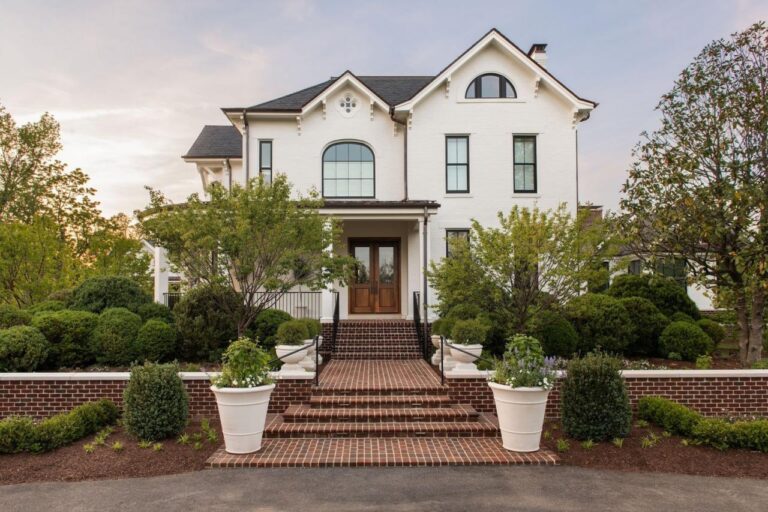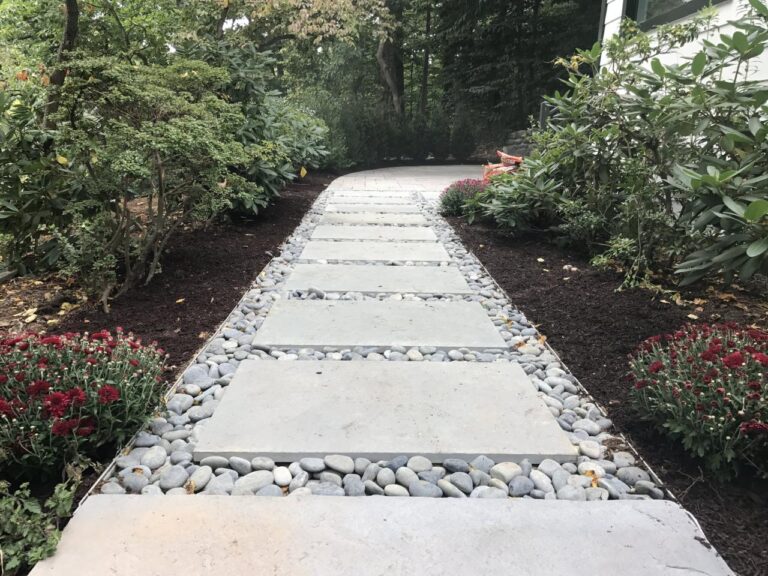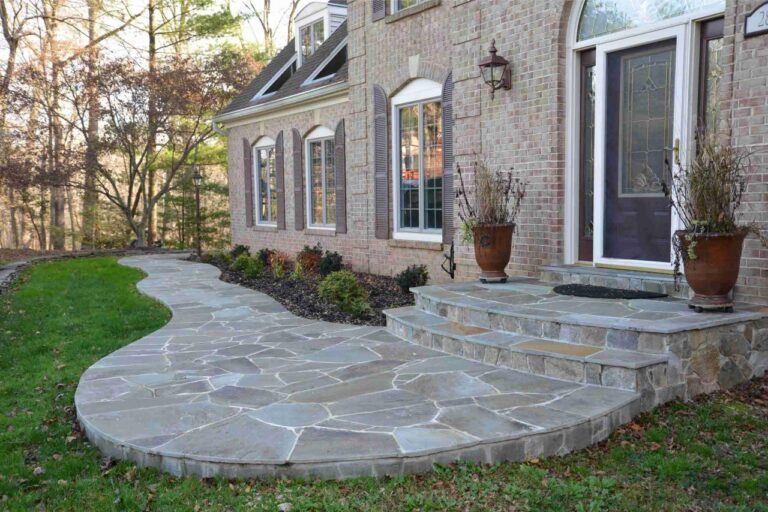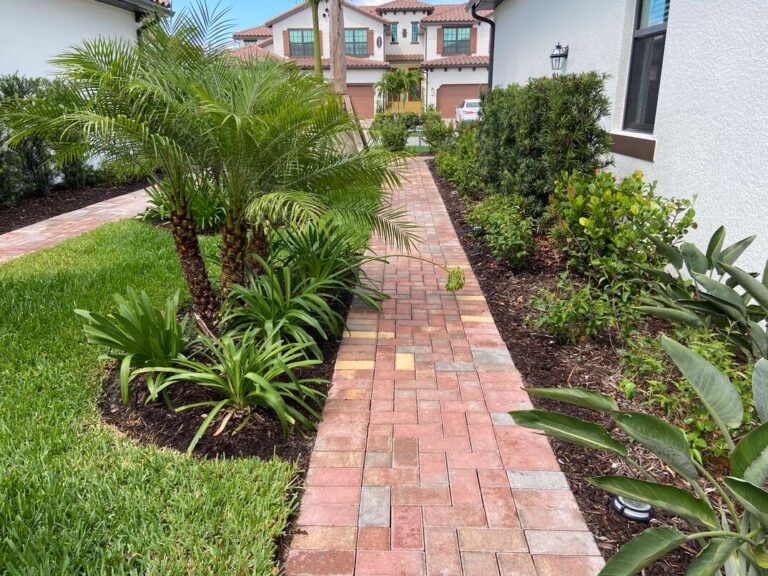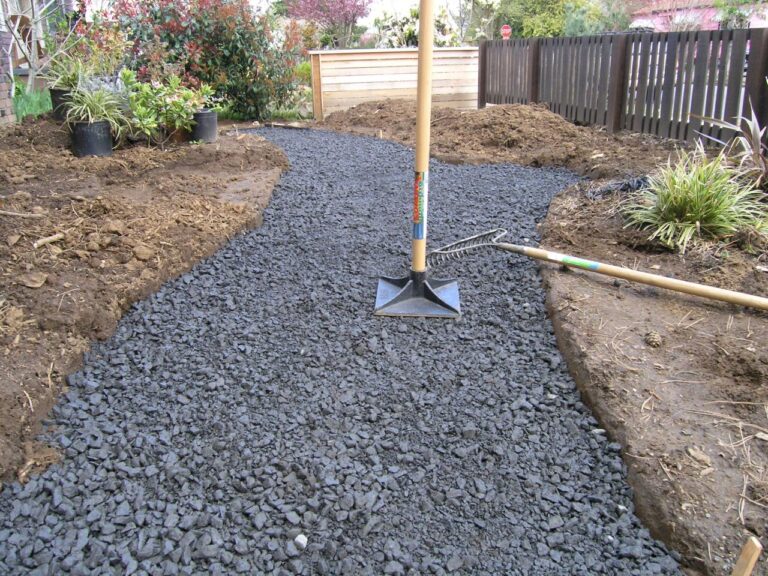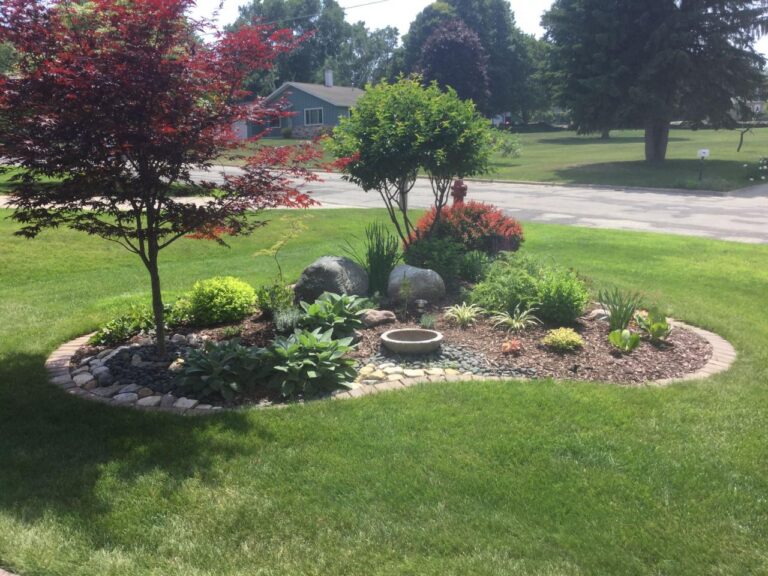Paver Walkways And Patios
Paver walkways and patios offer a blend of beauty, durability, and functionality, transforming outdoor spaces into inviting havens. This guide delves into the diverse world of paver materials, exploring their unique characteristics, from the classic elegance of brick to the modern appeal of concrete. We’ll navigate the intricacies of design, covering everything from selecting the perfect paver pattern to ensuring accessibility and proper drainage. Furthermore, we’ll guide you through the installation process, offering practical tips and techniques to achieve a long-lasting and visually stunning result. Finally, we’ll explore creative design applications and cost-effective strategies to help you bring your outdoor vision to life.
Whether you’re a seasoned DIY enthusiast or a homeowner embarking on your first landscaping project, this comprehensive guide provides the knowledge and inspiration you need to create breathtaking paver walkways and patios that enhance the beauty and value of your property. From choosing the right materials and planning the layout to mastering the installation process and maintaining your new space, we’ll cover it all.
Paver Materials: A Comparative Analysis
Choosing the right paver material is crucial for the longevity, aesthetic appeal, and overall success of your walkway or patio project. Several factors, including durability, cost, and aesthetic preferences, should be carefully considered. The following table provides a comparison of common paver materials.
Paver Material Comparison
| Material | Durability | Cost | Aesthetic Description |
|---|---|---|---|
| Brick | High; resistant to cracking and fading, but susceptible to staining | Medium to High | Classic, versatile; offers a wide range of colors and textures; and can create both formal and informal looks. |
| Concrete | Medium to High; durability varies depending on quality and mix; susceptible to cracking under heavy loads or freeze-thaw cycles. | Low to Medium | Highly versatile in terms of color, shape, and texture; can mimic the look of other materials; often more affordable than other options. |
| Natural Stone (e.g., flagstone, slate, granite) | High; extremely durable and long-lasting; resistant to weathering | High | Unique, natural appearance; wide variety of colors and textures; can create a sophisticated and elegant look. Often requires sealing. |
| Permeable Pavers | Medium to High; durability varies depending on material and construction; allows water to seep through, reducing runoff. | Medium to High | Similar aesthetic options to concrete and brick; offer environmental benefits by reducing stormwater runoff. |
Patio Design Examples
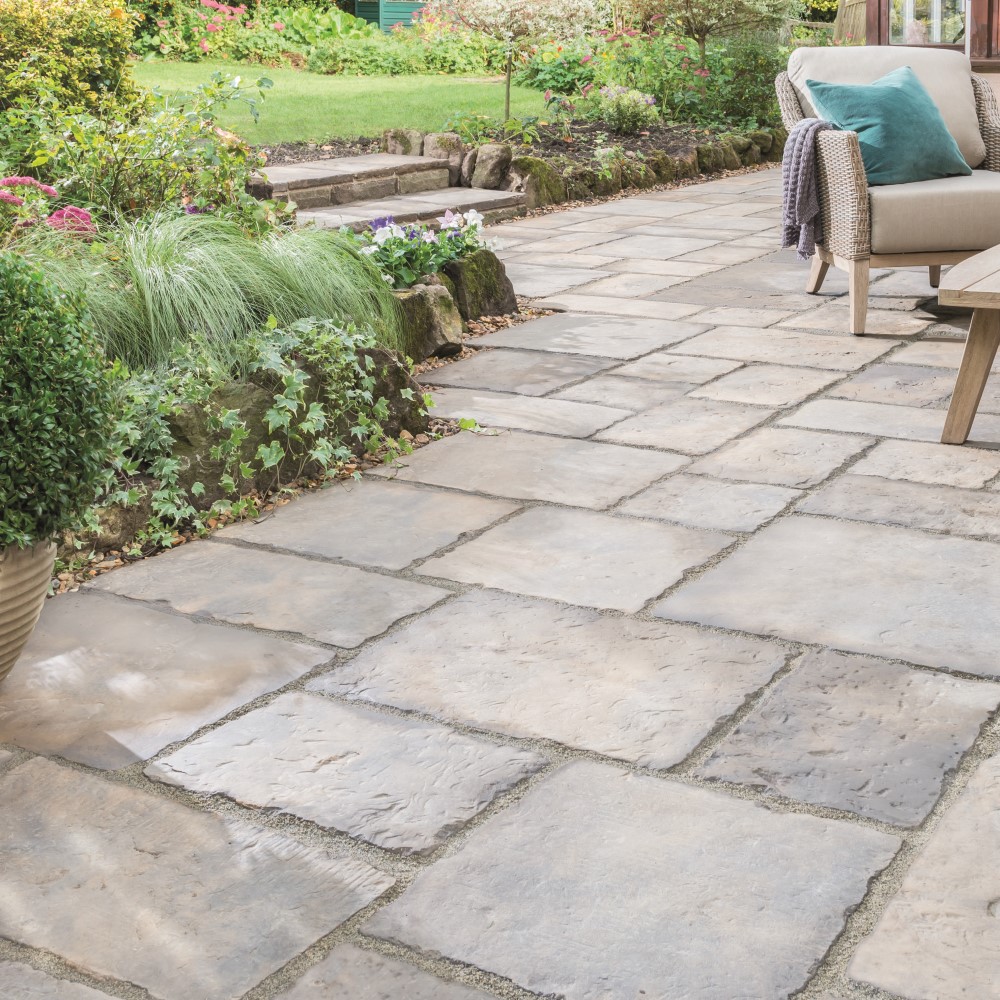
Source: simplypaving.com
The choice of paver material significantly influences the overall design style. Here are three patio design examples, each showcasing a different aesthetic and material choice:
- Modern Patio (Concrete Pavers): A minimalist design featuring large, square concrete pavers in a neutral gray color, laid in a simple running bond pattern. Clean lines and a lack of ornamentation create a sleek and contemporary feel.
- Traditional Patio (Brick Pavers): A classic design utilizing red brick pavers in a herringbone pattern. The warm tones of the brick and the intricate pattern create a welcoming and traditional atmosphere. Perhaps incorporating a small circular fire pit in the center.
- Rustic Patio (Natural Stone Pavers): A natural and organic design featuring irregularly shaped flagstone pavers in varying shades of brown and gray. The random placement of the stones creates a relaxed and rustic feel, complemented by surrounding landscaping.
Paver Maintenance
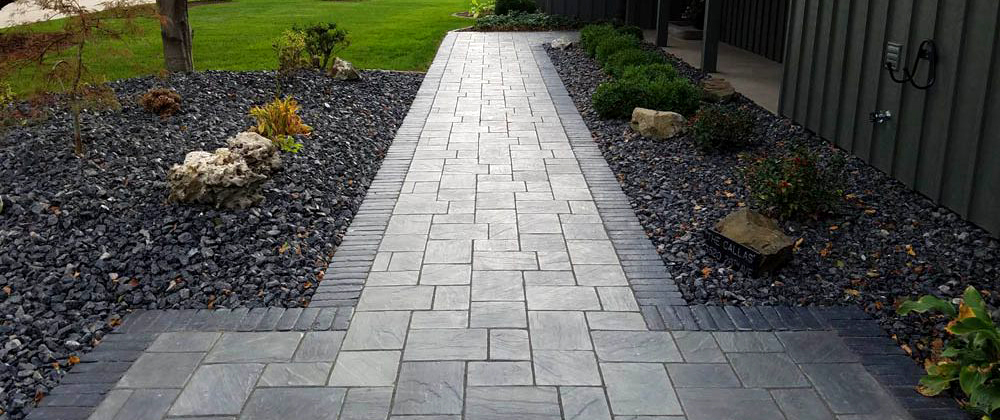
Source: meyerlandscape.com
Regular maintenance is crucial for preserving the beauty and longevity of your paver walkway or patio. Maintenance requirements vary depending on the paver material.
- Brick: Regular sweeping and occasional power washing to remove dirt and stains. Sealing may be beneficial to protect against staining.
- Concrete: Similar to brick; sweeping and power washing are effective. Cracks can be repaired with concrete patching compound.
- Natural Stone: Regular sweeping and occasional sealing to protect against water damage and staining. Larger cracks may require professional repair.
- Permeable Pavers: Regular sweeping is essential to prevent clogging. Occasional rinsing may be necessary to remove debris.
Paver Walkway and Patio Design Considerations
Careful planning is essential for creating functional and aesthetically pleasing paver walkways and patios. This includes selecting appropriate patterns, ensuring accessibility, and addressing drainage issues.
Paver Patterns and Aesthetics
Different paver patterns significantly impact the overall visual appeal. Some popular options include:
- Running Bond: A simple and classic pattern where pavers are laid in parallel rows with staggered joints.
- Herringbone: An elegant pattern where pavers are laid at a 45-degree angle, creating a V-shaped design.
- Basketweave: A more intricate pattern where pavers are laid in a woven design, creating a textured surface.
Each pattern offers a unique aesthetic and can be adapted to suit various design styles.
Accessible Paver Walkway Design
Designing accessible walkways is crucial for ensuring inclusivity. Key considerations include:
- Slope: Maintain a gentle slope (no more than 1:20) to prevent water pooling and ensure smooth wheelchair access.
- Width: Ensure sufficient width (at least 36 inches) to accommodate wheelchairs and walkers.
- Surface Texture: Choose pavers with a non-slip surface to enhance safety and prevent falls.
- Joint Width: Keep joint width consistent to create a smooth surface.
Drainage and Water Runoff
Proper drainage is essential to prevent water damage and ensure the longevity of your paver installation. Potential challenges include water pooling and erosion. Solutions include:
- Base Preparation: Creating a well-compacted base with proper grading to ensure adequate drainage.
- Permeable Pavers: Using permeable pavers allows water to seep through, reducing runoff and preventing waterlogging.
- Drainage Channels: Installing drainage channels or trenches to direct water away from the paved area.
Paver Installation Process and Techniques
Successful paver installation involves careful preparation, precise placement, and proper joint filling. Following a step-by-step process ensures a durable and aesthetically pleasing result.
Step-by-Step Installation
- Site Preparation: Clear the area, excavate to the required depth, and compact the sub-base.
- Base Installation: Lay and compact a layer of gravel or crushed stone to provide a stable base.
- Edging Installation: Install edging materials to contain the pavers and prevent shifting.
- Paver Placement: Carefully lay the pavers, ensuring proper spacing and alignment.
- Joint Filling: Fill the joints with sand or polymeric sand to stabilize the pavers and prevent weed growth.
- Compaction: Compact the pavers and joint filler to ensure stability.
Base Preparation Methods
| Method | Description |
|---|---|
| Gravel Base | Utilizes compacted gravel as a base layer, providing good drainage and stability. Suitable for most applications. |
| Crushed Stone Base | Similar to gravel, but offers better compaction and load-bearing capacity. Ideal for areas with heavy traffic. |
Joint Filling and Sealing, Paver walkways and patios
Proper joint filling is crucial for preventing weed growth and ensuring long-term durability. Common joint filling materials include:
- Sand: A cost-effective option, but requires regular maintenance to prevent weed growth.
- Polymeric Sand: A more expensive option, but provides superior weed control and stability.
Creative Paver Designs and Applications: Paver Walkways And Patios
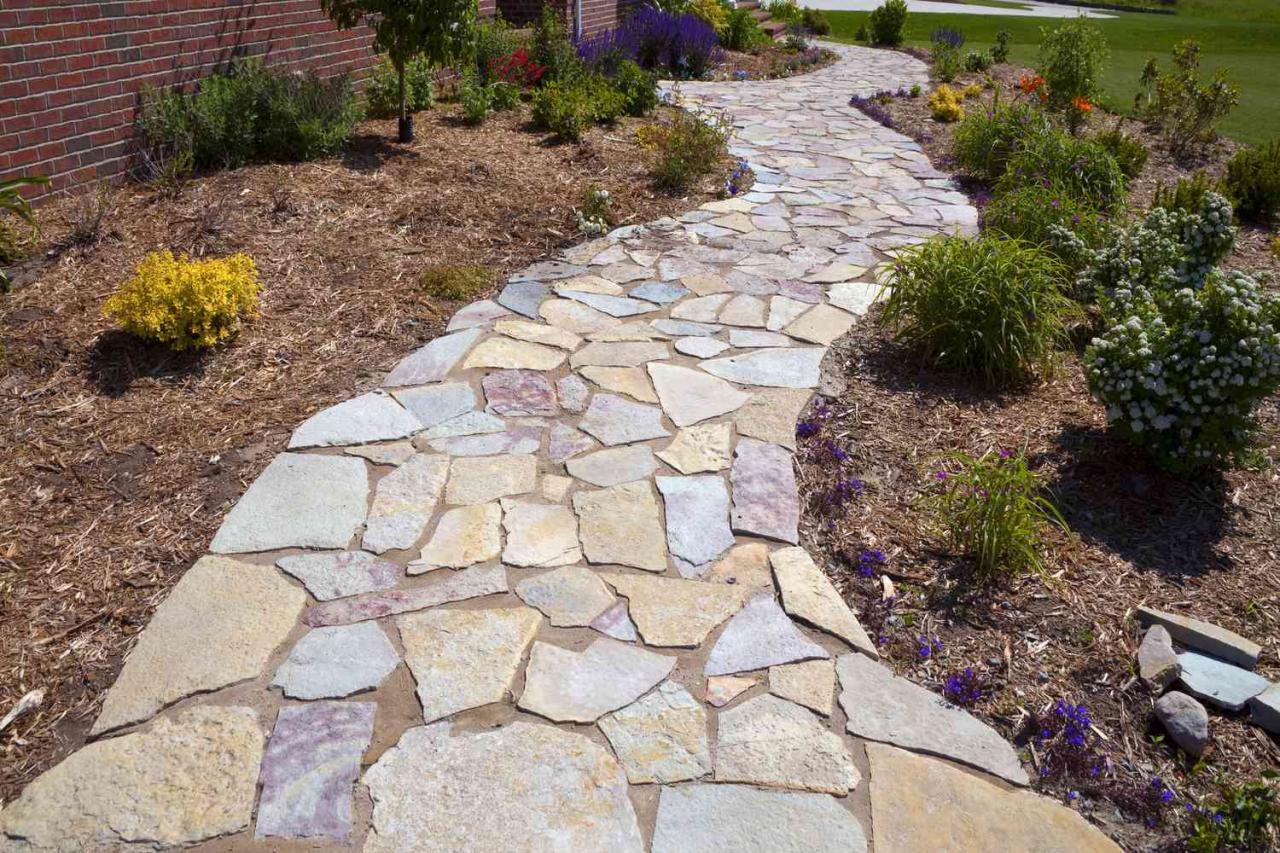
Source: thespruce.com
Pavers offer a wide range of creative possibilities beyond basic walkways and patios. They can be used to create unique features and enhance the overall landscape design.
Unique Paver Designs
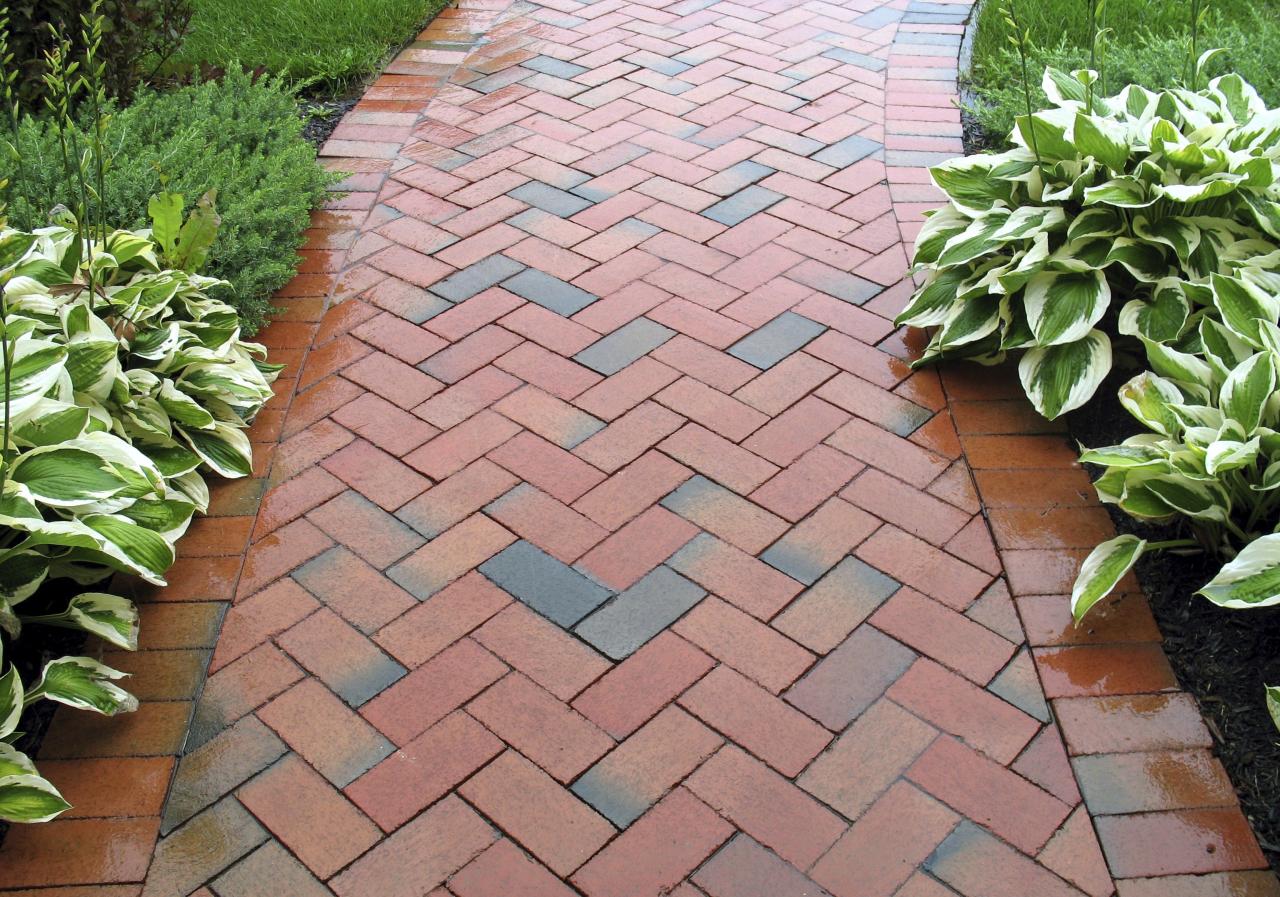
Source: paversdrivewaysva.com
- Geometric Design: A design incorporating a mix of square and rectangular pavers in varying shades of gray and beige, laid in a complex geometric pattern to create a visually striking focal point.
- Curved Walkway: A meandering walkway using natural stone pavers, curving gently through a garden to create a sense of discovery and lead to a secluded seating area.
- Circular Patio: A circular patio paved with brick pavers in a herringbone pattern, creating a formal and elegant space.
Integrating Pavers with Landscaping
A walkway seamlessly integrated with surrounding landscaping might use the same stone as a retaining wall bordering a flower bed, creating a cohesive and visually appealing design. The pavers could even be extended slightly beyond the walkway to form stepping stones through the flower bed.
Unique Paver Features
Pavers can be used to construct various features, including:
- Fire Pit: A circular fire pit constructed using large, heat-resistant pavers, creating a cozy and inviting gathering space. The surrounding area could be paved with smaller pavers in a contrasting color.
- Raised Garden Beds: Raised garden beds are constructed using brick or concrete pavers, providing a defined and aesthetically pleasing space for planting.
Cost Estimation and Budgeting
Accurate cost estimation is crucial for successful project planning. Several factors contribute to the overall cost of a paver installation.
Cost Breakdown
- Materials: The cost of pavers, base materials, edging, sand, and joint filler.
- Labor: The cost of hiring professionals for excavation, installation, and compaction.
- Permits: Any necessary permits required for the project.
- Contingency: A buffer for unforeseen expenses.
Cost Minimization Strategies
- DIY Installation: Consider undertaking some aspects of the installation yourself to reduce labor costs.
- Material Selection: Choose less expensive paver materials without compromising quality.
- Project Scope: Reduce the project’s scope to minimize material and labor costs.
Sample Budget (Medium-Sized Patio)
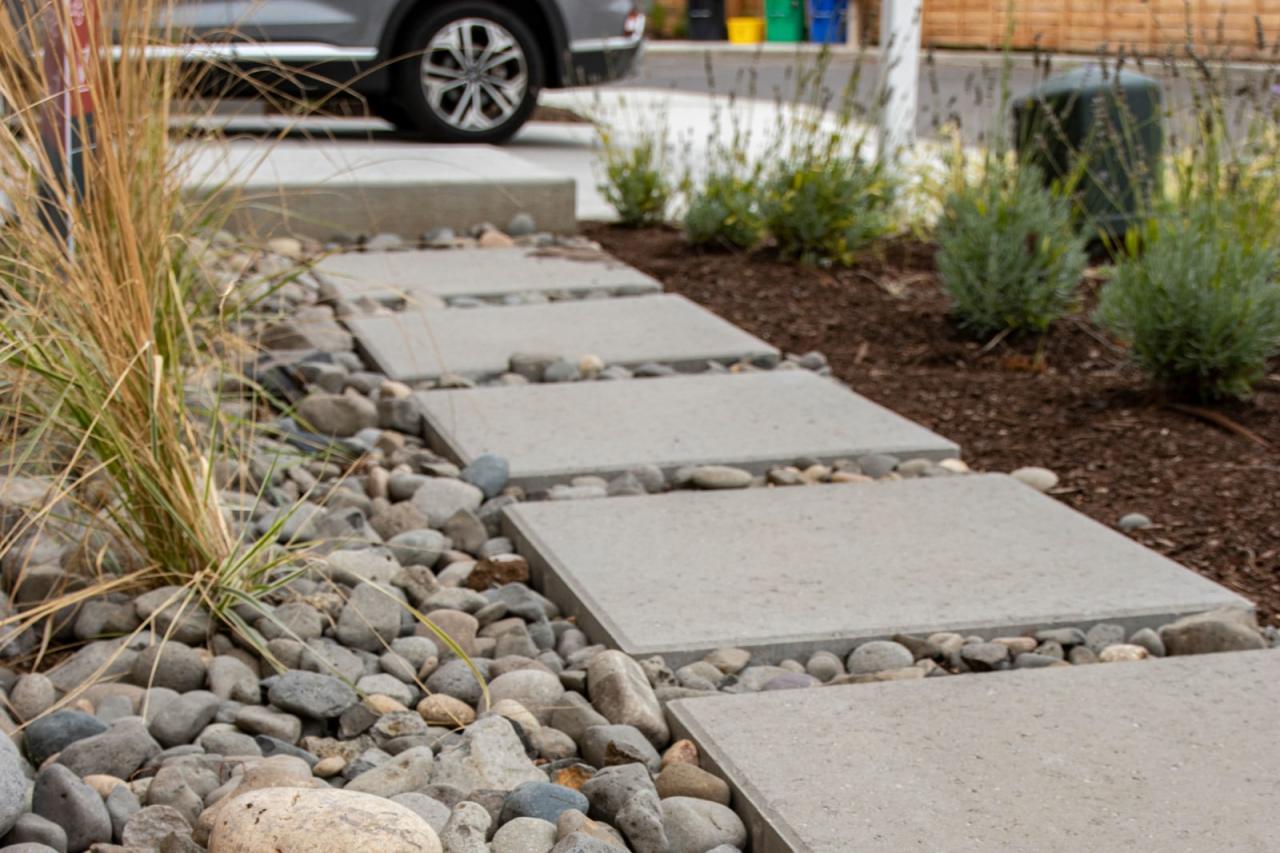
Source: westerninterlock.com
| Item | Cost |
|---|---|
| Materials | $2000 |
| Labor | $3000 |
| Permits | $200 |
| Contingency | $300 |
| Total | $5500 |
Key Questions Answered
What is the lifespan of a paver patio?
With proper installation and maintenance, a paver patio can last for 20-30 years or even longer.
Can I install the pavers myself?
While DIY installation is possible, it requires significant effort and skill. Consider professional installation for larger or more complex projects.
How often should I clean my paver patio?
Regular sweeping is recommended. Deep cleaning with a pressure washer should be done once or twice a year.
What are the best ways to prevent weeds from growing between pavers?
Proper joint filling with polymeric sand is crucial. Regular weeding and the application of weed preventatives can also help.
Are pavers a good investment?
Yes, pavers increase curb appeal and property value, offering a long-term return on investment.
